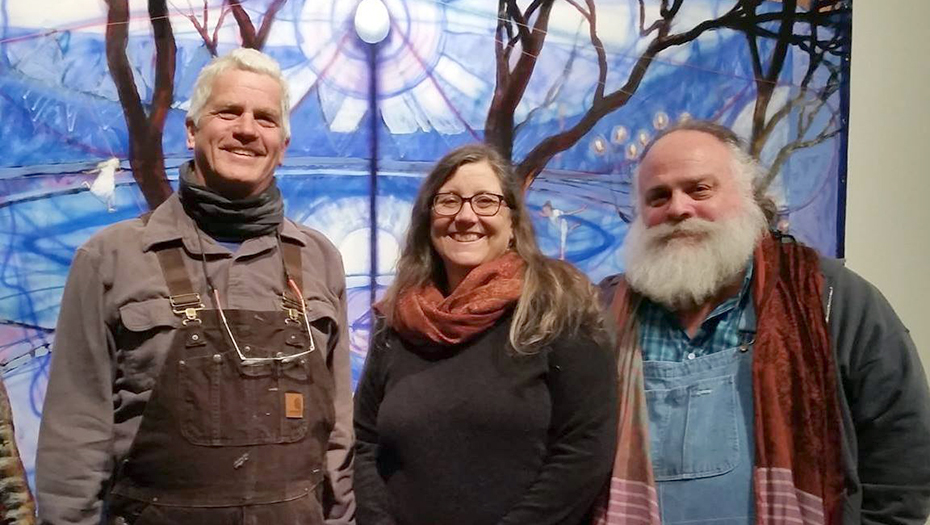
Faculty
Mark Anderson
Lassiter Professor of Art
B.S., Asbury College
M.F.A., University of Tennessee
mranders@presby.edu
Dr. Laura Crary
Professor of Art History, Department Chair
B.F.A., Studio Art: Ohio University
M.A., Ph.D., History of Art: University of Pittsburgh
Graduate certificate, Latin American Studies: University of Pittsburgh
lcrary@presby.edu
Dr. Laura Crary followed a B.F.A. in Studio Art from Ohio University in Athens, OH with a Ph.D. in the History of Art and a Graduate Certificate in Latin American Studies from the University of Pittsburgh. The research for her dissertation, “Representations of the Self: Problems of Image and Identity in the Self-Portraits of Frida Kahlo,” led her to spend nearly two years in Mexico, principally in Mexico City and the city of Oaxaca, in southern Mexico.
Dr. Crary came to Presbyterian College in 2002 and makes her home in Clinton. She travels frequently, both in the United States and abroad, looking at art, and expanding her knowledge base for teaching classes in art history. She has led short-term study abroad trips for students to England, Spain, Greece, and Italy, and has accompanied students to Cuba. Dr. Crary also accompanies students on Art Department field trips to New York, Washington, DC, and Pittsburgh.
In the spring semester of 2016, Dr. Crary spent a sabbatical leave researching contemporary art. She attended the Venice Biennale in June 2015 and followed up by visiting galleries and museums in New York City and reading journals on contemporary art to get a better sense of the forces shaping art and culture in today’s world.
Ralph Pàquin
Professor of Art
B.F.A, University of Massachusetts
M.F.A., Cranbrook Academy of Art
rpaquin@presby.edu
Ralph Pàquin was born in Newport, Rhode Island, in 1954. During his adolescence, he studied with craftsmen and artists in California, Nebraska, Virginia, Florida and Rhode Island. He received a BFA in Sculpture at the University of Massachusetts at Dartmouth, where he studied under New York painter, Edward Togneri; Italian sculptor Dominick Angelo; and Chicago ceramic artist, Harvey Goldman. In 1980, he attended Cranbrook Academy of Art to study and work with world-renowned ceramic artist Jun Kaneko and sculptor Michael Hall. After Cranbrook, Pàquin shifted into large-scale artworks conceptually based on “the human condition.” In the following years, Paquin held residences and teaching positions at MIT, Ohio State University, Furman University and Presbyterian College, where he currently teaches.
From 1984-2004, Pàquin’s ceramic art shifted from object to multi-media installation/performance using mechanical objects, sound, and light. For the next eight years, he collaborated on large-scale installation projects with artist Ann Stoddard at a number of venues including MIT, MediaLab, and Artist’s Space Gallery in NYC. Following the decline of NEA and other public funding sources, Pàquin left the collaborations and returned to creating large-scale ceramic sculpture. During the next ten years, he dedicated most of his studio practice to making the figurative ceramic works titled “The Distraught Series.” The series attracted the attention of New York City art critic, Donald Kuspit, who visited Pàquin’s studio to write about his artwork.
The 2003-04 escalation in prices for natural gas, materials and shipping costs resulted in a major change of media choices for producing sculpture. Researching new media and processes, Pàquin’s sculpture and works on paper moved dramatically toward anthropomorphically reduced forms and shapes. This new body of over-simplified artwork consisting of sculptures and drawing continues to evolve into “essential forms” fueled by the science of genetics.
Pàquin currently maintains a sculpture and drawing studio in Spartanburg, South Carolina, where he lives.
